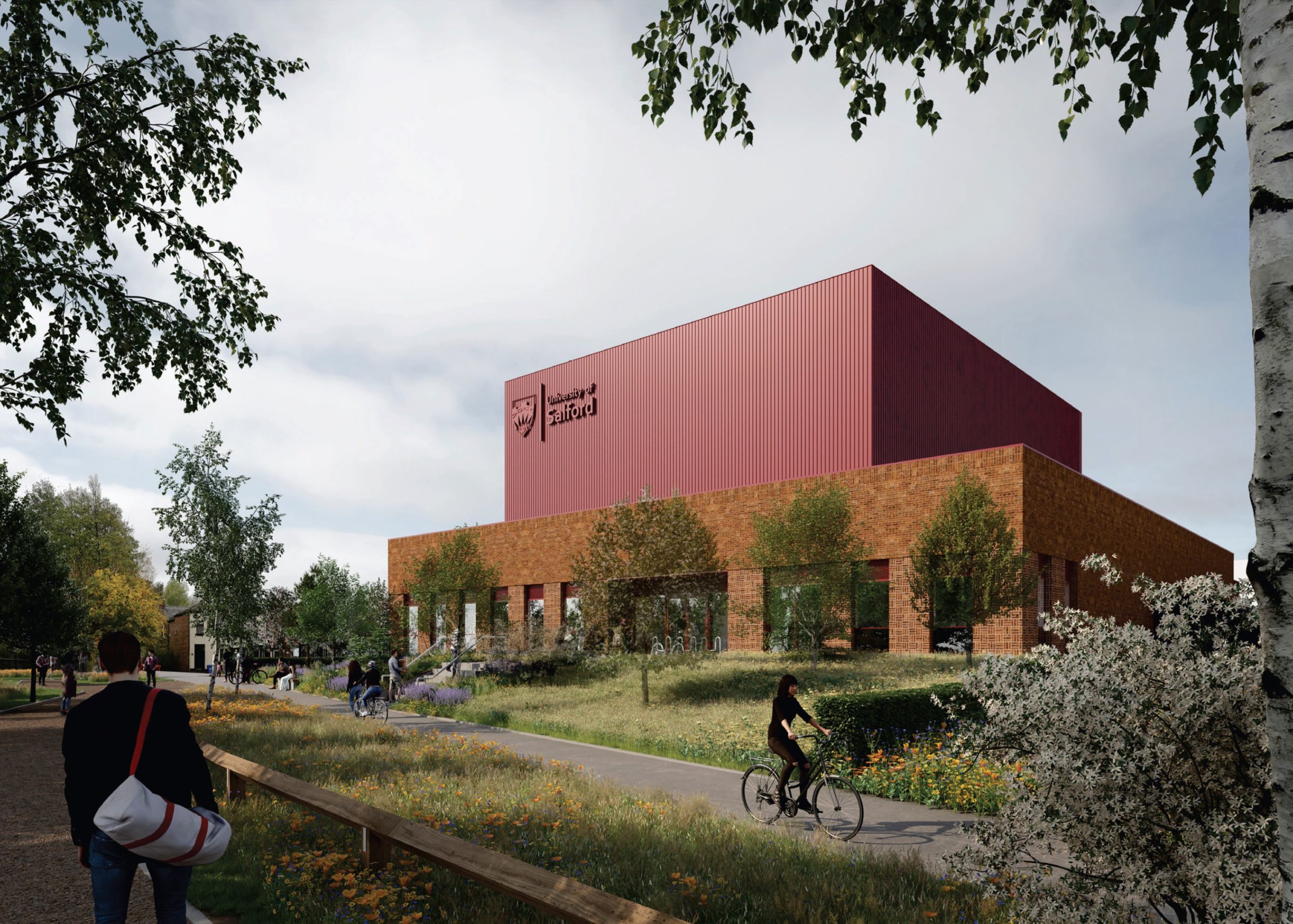Planning permission granted for world-leading Acoustics building
11.04.25 4 min read

Plans to create a brand-new state-of-the-art Acoustics building as part of Crescent Salford’s innovation zone have been accepted by Salford City Council.
The world-class facility will house the research, commercial and teaching activities of the University of Salford’s Acoustics Department and work on the 1,300 m2 building is expected to begin this summer, taking around 18 months to complete.
The Acoustics Building will sit in Crescent Innovation, which forms part of the wider £2.5bn, 240-acre Crescent Salford masterplan we are delivering with our ECF partners, L&G and Homes England, alongside Salford City Council and the University of Salford.
Crescent Innovation will build on existing research and development capabilities to drive further economic growth in Salford and facilitate enhanced links between academia, research and business. Within this 29-acre area, which lies north of the University’s Peel Park campus, the Acoustics building will be located on a former industrial site on Lissadel Street.
Planning approval for the Acoustics building marks the next step in the creation of Crescent Innovation, after work began on Salford Rise last September.
The new facility represents an investment into acoustics of international scale, drawing together an impressive range of testing equipment of the highest technical specification to underpin the most rigorous acoustic measurements. Each space in the new building will enable active research by one of the largest acoustics groups in the world, supported by the hands-on expertise of specialist technical staff.
Morgan Sindall Construction has been appointed as lead contractor, having previously collaborated with the University on the creation of multiple new learning environments including the North of England Robotics Innovation Centre, which is also within Crescent Innovation.
Max Bentham, Development Director, said:
Director of the National Institute of Airborne Acoustic Metrology at the University of Salford, Claire Lomax said:
“The whole acoustics team at Salford are thrilled that planning consent has been granted for this globally unique building. Every person on earth is affected by what they can or cannot hear, which is why acoustics as a science is so significant.
“To have this facility in Salford shows the University’s commitment to innovation to enrich lives – in this case through pioneering research, impacting policy and industry standards, and shaping products sold worldwide.”
In line with the latest sustainability standards, the all-electric building will target a BREEAM rating of ‘Excellent’ and utilise low-energy and low-carbon technologies to minimise energy consumption and reduce the carbon footprint of the building.
Paul Dennett, Salford City Mayor, said:
“This state-of-the-art Acoustics building will be an incredible addition to the growing Crescent Innovation zone, building on the completed North of England Robotics Innovation Centre and Salford Rise, which is due to complete next year. This new development will reinforce our city’s reputation as a hub for cutting-edge research and development and aligns perfectly with the Council’s Corporate Plan objectives, by driving economic growth, fostering innovation, and creating opportunities for skills development. By investing in world-class facilities like this, the University are not only supporting our local economy, but contributing to global advancements in acoustics, that will improve lives for generations to come.”
Steven Gregory, Morgan Sindall Construction’s area director for the North West said:
“We’re very proud to be part of the team that will deliver another world-class facility for Salford University and the wider Crescent Salford innovation zone. We can’t wait to get started in the summer.
“In our delivery of other projects on campus, we have developed a close, collaborative working relationship with the University. On this latest scheme, we will again ensure our presence brings wider benefits to the University’s students as well as the wider Salford community.”